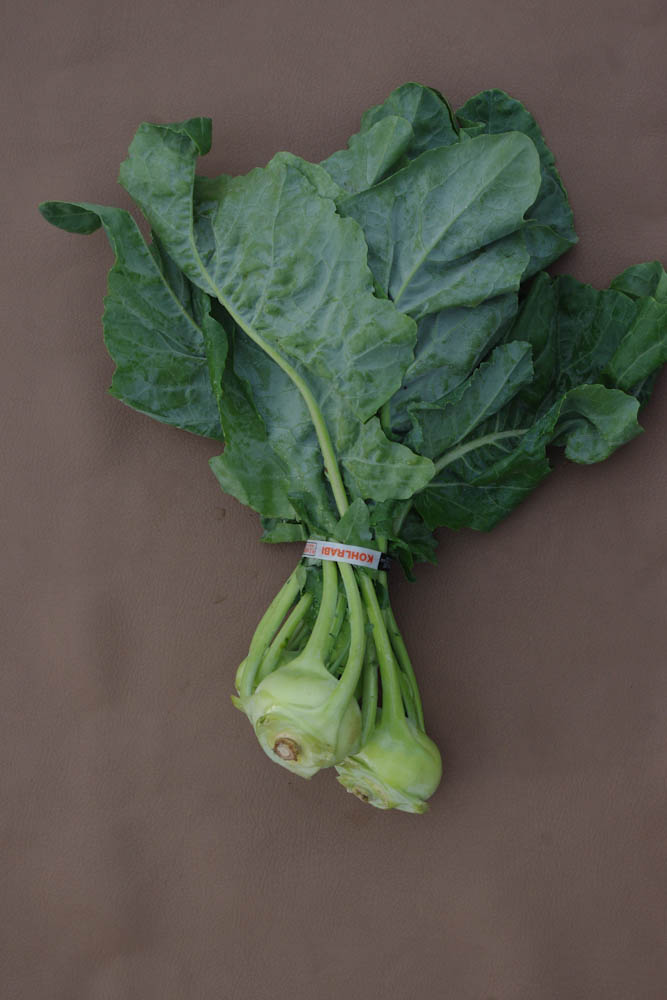Kohlrabi
Kohlrabi (Brassica oleracea var. gongylodes) is a cool-season annual cole crop that is related to broccoli, cabbage, cauliflower and Brussels sprouts. Kohlrabi originated in northern Europe in the 16th century. It forms a round globe just above the soil line with leaves emerging in a spiral from the stem. The edible portion is actually an enlarged stem, not root tissue. Kohlrabi can be eaten raw or cooked. In flavor, it is like a mild, sweet broccoli stem or turnip. Once the thick skin is peeled off, the crisp flesh can be eaten like a carrot often with a dip or in salads. It can be boiled, braised, used in soups and stews, made into home fries and even pies. In Kentucky, kohlrabi does well in the spring but is best as a fall crop.
Marketing

Kohlrabi has potential for fresh market sales in Kentucky, especially during fall and winter months. Winter storage varieties, harvested in late fall, can be sold at winter farmers markets and in winter community supported agriculture shares. Niche wholesaling, to local foodservice chefs and food retailers, may also be a potential market for kohlrabi. Providing recipes and use suggestions to customers unfamiliar with kohlrabi may help promote sales.
Production
 Kohlrabi is a cool-season crop and is grown during the spring and fall in Kentucky. It does best when soil temperatures are between 55 and 75 degrees F. It can be direct seeded in the field or transplanted. For a spring crop, seeds may be planted outdoors after March 15th in western Kentucky and March 25th in eastern Kentucky. Transplants are generally started indoors four to six weeks before transplanting. Transplants can be set around March 25 in most parts of Kentucky. For a fall crop, the latest outdoor seeding dates are August 15 for western Kentucky and July 15 for eastern Kentucky. If planted later, harvest might extend through Thanksgiving. Kohlrabi varieties are light green in color, but there are also a few purple varieties. All have a white flesh.
Kohlrabi is a cool-season crop and is grown during the spring and fall in Kentucky. It does best when soil temperatures are between 55 and 75 degrees F. It can be direct seeded in the field or transplanted. For a spring crop, seeds may be planted outdoors after March 15th in western Kentucky and March 25th in eastern Kentucky. Transplants are generally started indoors four to six weeks before transplanting. Transplants can be set around March 25 in most parts of Kentucky. For a fall crop, the latest outdoor seeding dates are August 15 for western Kentucky and July 15 for eastern Kentucky. If planted later, harvest might extend through Thanksgiving. Kohlrabi varieties are light green in color, but there are also a few purple varieties. All have a white flesh.

